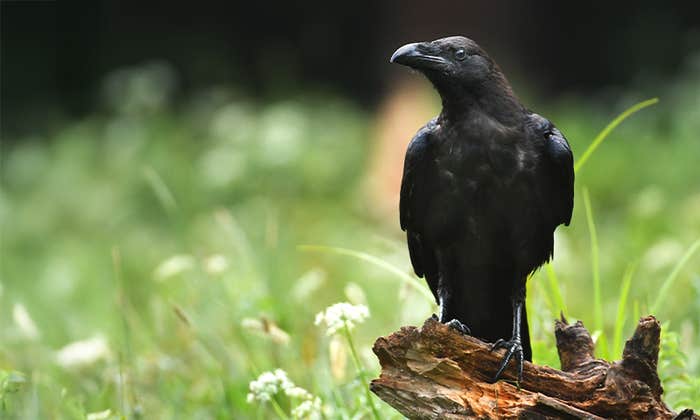Several years ago, I climbed Mt. Washington in Nevada to see the oldest complex life forms on Earth. Typically found at elevations higher than 3,000 meters, bristlecone pine trees can live for as long as five millennia. They do so by growing very slowly in arid environments that are too harsh for most other life forms.
In current climate conditions, a bristlecone pine tree might expand in thickness by one millimeter each year. But the thickness of tree rings will vary based on climate conditions: the amount of rainfall and the level of carbon dioxide in the air.
Dendrochronology is a branch of science dedicated to interpreting the paleoclimate by reading the rings. Using this technique, science has monitored climate variability—and even cataclysmic events—going all the way back to the last Ice Age.
I climbed Mt. Washington to see these trees first-hand, in one of the world’s largest bristlecone forests. It was a six-hour drive from Reno. After the first few hours, I seldom passed another car or truck. My travel companions on this lonely trip were members of the Long Now Foundation, a San Francisco-based organization that has spent the past decade building a monumental clock in a mountain on West Texas property owned by Amazon founder Jeff Bezos. The clock is designed to keep accurate time for the next 10,000 years.

The forest atop Mt. Washington is administered by Long Now, and we were visiting the property because I’m developing a new project there, a project that involves the bristlecones in their capacity as steadfast recorders of the past. My ambition is to direct their sense of history toward the future, by enlisting them as a new kind of timekeeper: a clock that varies with the changing climate.
The concept is simple. Imagine a young bristlecone pine tree surrounded by a spiral of markers, regularly spaced in 500-year increments, based on the estimate girth of the tree in 500 years, 1,000 years, and more—if the future growth rate is consistent with the present. Now imagine that each marker has been inscribed with the year the tree will reach it—if the climate doesn’tchange. Then stand back and give the tree authority.
The tree will almost certainly grow out of sync with Gregorian years. If the tree grows faster in the future because of rising carbon dioxide, it may tell you that the year is 3500 when your iPhone 1100 says it’s 3127. Giving the tree authority means living on bristlecone time.
Early life forms can teach us how to live. I’ve dubbed this design practice paleobiomimicry.
In order for that to happen practically, the time told by the trees will need to be transmitted to the city. The bristlecone sapling on Mt. Washington will be rigged with an electronic dendrometer, an instrument that wraps around the tree trunk, precisely measuring diameter. Data from the dendrometer will be relayed to a computer. The computer will calculate an exact date and time based on the tree’s real-time change in girth. The circuitry will control a monumental electro-mechanical clock situated at the Nevada Museum of Art.
Additionally, the time signal will be available to anyone anywhere as a new time protocol, equivalent to the atomic Network Time Protocol maintained by the National Institute of Standards and Technology. This arboreal protocol will allow people to put their smart watches, their computers, and their entire lives onto bristlecone time.
I can’t foretell what will happen, but I’m certain that it won’t be business as usual. Time will be irregular. Future planning will have an element of unpredictability.
There may also be a deeper effect, one that might encourage people to interact with the changing climate directly. The clock can provide an ecological feedback loop, calibrating our actions in relation to climate change—potentially guiding more environmentally responsible behavior individually and collectively.
Centuries of the Bristlecone is characteristic of what I do for a living. My training is in philosophy, which I practice in public. My ambition is to engage as broad a population as possible in the realm of ideas, encouraging people to explore the world in which we live, and to chart possible futures for our cities, our environment, and our planet. I believe that collective reflection and anticipation are necessary for our survival—especially in this period of ecological upheaval—and that philosophy needs to be a public service as much as cartography and timekeeping.
One of my primary techniques, adapted from philosophy, is to undertake large-scale thought experiments. In these experiments, I create alternative realities that provide perspectives on our own society, and provoke dialogue about who and what we want to become. Another of my techniques is to create philosophical instruments: tools and devices with which people can collectively investigate the places they inhabit.
The former technique is exemplified by Centuries of the Bristlecone, and other environmentally-calibrated clocks I’m developing in other cities, such as a timepiece modulated by the flow of rivers in Alaska, currently in planning at the Anchorage Museum.

The latter is exemplified by a project I initiated in Berlin in 2014, which I’ve now instigated in cities around the world. It’s a new kind of camera that produces a single exposure over a span of 100 years.
People hide these cameras throughout their city, providing a means for the next generation to observe the decisions that citizens make about their urban environment: decisions about development and gentrification and sustainability. In a sense, these devices are intergenerational surveillance cameras. They prompt people to consider the long-term impact of their actions. They encourage people to act in ways that will change the picture to reflect what they want the next generation to see.
But the truth is that most of my projects—perhaps even the two I’ve just mentioned—combine techniques from philosophy and many other disciplines. In order to map out possible futures for society, especially while navigating the shifting terrain of climate change, the philosopher-explorer needs to be adaptable. And most likely you won’t have all the skills and tools you need. I believe that anyone can become a philosopher-explorer. The practice benefits from more practitioners. No particular abilities are needed, except a capacity for collaboration.
A year ago, I was invited by the Fraunhofer Institute for Building Physics to envision the city of the future. Through Fraunhofer’s artist-in-lab program, I had the opportunity to work with leading scientists and engineers, and to run computer simulations and physical experiments on state-of-the-art equipment in Stuttgart and Holzkirchen, Germany.
My starting point was to consider one of the most serious problems faced by cities today: sea level rise. Global sea levels are expected to increase by two-and-a-half meters by the end of the century, and as much as 15 meters in the next 300 years. With 11 percent of the world population living less than 10 meters above the current sea level, many cities will probably be submerged in the future: mega-cities including New York and Shanghai. One likely response is that people will migrate inland, seeking ever higher elevations.
The question I asked myself was this: Would it make more sense to stay put?
The reason I asked this question was straightforward. Global warming will not only melt polar ice and expand oceans. Increasing temperatures will also exacerbate the urban heat island effect, which is already broiling cities and leading to greater dependency on energy-intensive air conditioning.
More broadly, climate change will expose populations to increasingly extreme weather. I wanted to find out whether these effects might be moderated by large bodies of water, which can provide evaporative cooling and serve as natural heat sinks.
Billions of years ago, the first terrestrial life forms lived in tidal and fluvial shallows. These communities of microbes appear to have been able to endure the harsh paleo-environment—tempering the local climate—by remaining semi-aquatic. They’re known as stromatolites, and they’re remarkably complex, because they’re comprised of many microbial species living in symbiosis. In a way, you might think of them as the very first cities.

Stromatolites were my inspiration for proposing that cities of the future might thrive in tidal environments. Architects and engineers often take inspiration from the natural world. Through a process called biomimicry, they solve human problems using the evolutionary innovations of other species. (One classic example is Velcro, which is designed to copy how thistles attach to animal fur.)
Biomimicry can be a powerful technique. There is much to learn from organisms in our midst. But I believe that some of the greatest inspiration can be found by looking to the deep past, especially when contending with climate change. Future conditions on the planet will be harsh. The closest analogue may be the conditions in which the first life evolved. These early life forms can potentially teach us how to live. I’ve dubbed this design practice paleobiomimicry.
Given their great age, stromatolites are perfect subjects for paleobiomimetic innovation. Working in collaboration with experts at Fraunhofer IBP and the Berlin Natural History Museum, and in partnership with STATE Studio, I took microbial inspiration as far as humanly possible. To be specific, I asked Fraunhofer IBP to scientifically test what would happen if cities such as New York and Shanghai were structured and organized like stromatolites.
In my opinion, the unasked question of our age is whether the Anthropocene is inevitable.
Stromatolites grew in layers, and multiple layered communities could be found clustered in a tidal shallow. Each new living stratum of a stromatolite captured marine sediment, making a sort of cement. As older layers died, they supported new ones above. Over time, stromatolites would become taller and taller, kind of like highrises in an urban downtown.
Of course skyscrapers don’t continue growing after they’re built. My idea was to design architecture and infrastructure for ongoing growth: Buildings that could be layered continuously, with new floors piled on top as bottom layers were sacrificed to the rising seas.
First we wanted to make sure that this was worthwhile. We wanted to determine scientifically whether tidal conditions would moderate extreme weather as the planet warmed over the next several centuries.
We studied this in two ways. One was to heat a model city under artificial sunlight, measuring thermodynamics in a Fraunhofer IBP laboratory. The second approach was to create computer models of three places that are threatened by rising sea levels: New York, Shanghai, and Hamburg. We modeled districts in all three of these cities, subjecting them to projected climate conditions in the years 2100 and 2300. In each case, we compared a version on dry ground with a version that was flooded. The flooded districts had water levels of two-and-a-half and 15 meters, depending on the projected date. All buildings were stretched vertically to accommodate the flooding.
Both the physical and computer models showed significant benefits to flooding. Tidal cities really would be more clement, especially if the buildings were able to absorb and evaporate sea water through a process known as evaporative cooling.
Obviously there will be significant challenges to building cities in this way, ranging from transportation to sewage to social dynamics. Ultimately the Primordial Cities Initiative is not only an urban planning proposition, but also a philosophical provocation. Do we want to live in these extreme conditions? What would it take to avert them? These are some of the biggest questions of the Anthropocene.
The Anthropocene is a geological epoch named to call attention to human impact on the planet. This epoch, which follows the Holocene, has received a lot of attention lately, leading people to forget that it isn’t yet official. Geologists are still searching the planet for optimal placement of a permanent marker, known as the Global Boundary Stratotype Section and Point, or, more popularly, the golden spike. Candidate indicators range from the accumulation of fertilizer in Northern Hemisphere lake beds, to deposits of microplastics in the Great Barrier Reef, to radioactive fallout from the atomic bomb spread across Earth’s entire surface.
Each of these markers has its technical merits. But at least in my opinion, the unasked question of our age is whether the Anthropocene is inevitable. Instead of searching for the Anthropocene, can we rediscover the Holocene? How can humans inhabit the Holocene, and nurture it in ways that will sustain a planet on which all species can coexist?
The unspoken plea of the Anthropocene is to prevent this new geological epoch, instead of becoming the cause of it. The concept will succeed if it’s self-defeating—if the Anthropocene turns out to be nothing more than an unfortunate episode within a Greater Holocene that encompasses it.
I believe that we need to nurture the Holocene before geologists definitively strike the golden spike of the Anthropocene. Moreover, we need to recognize ourselves within this natural context, in order to extract ourselves from the international rivalries and interpersonal competition that are dehumanizing us and denaturing our global habitat. The Greater Holocene is not a fictive idyll, but rather a planet that sustains all species including humans, leaving enduring byproducts of this symbiosis in the geological record.
To help inspire the necessary shift, I recently launched the first chapter of a new grassroots organization called The Pioneers of the Greater Holocene. I launched the Pioneers in my hometown: San Francisco.
The mission of the Pioneers is simply to enlist private citizens to document and transform their local surroundings. Members collect evidence of wildlife in their midst, especially non-Anthropocenic attributes of the urban environment. These provide a template for more equitable future use of lands currently dominated by humans.
The Pioneers also actively rewild cities by planting native seeds wherever they might take root, including empty lots and sidewalk cracks. Sprouting in places that humans have sought to control—and modifying the concrete beneath people’s feet—these wild plants will literally reestablish the integrity of the Holocenic layer.
Secondary terraforming will visually renegotiate our relationship with the environment as an ecosystem rather than a hierarchy. Equally important, participation in this vast undertaking may help people to see how they can make a difference. Even the smallest gesture might suffice to overcome existential angst and paralysis.
Citizen documentation of the non-Anthropocenic environment will be exhibited at the University of Nevada-Reno’s W.M. Keck Earth Science and Mineral Engineering Museum this fall. The museum will also archive this evidence, and map out places around the world where geologists might strike a golden spike of the Upper Holocene. Everyone will be encouraged to make nominations.
Of course my personal choice would be to strike the golden spike up atop Mt. Washington, amongst the bristlecones. Although the area was once mined, the mining camps have become overgrown and the forest is almost immaculate. More important, the arboreal clock can bring the natural rhythms into future cities.
A natural time standard can inspire a new kind of biomimicry, a biomimesis that is systemic and all-encompassing: In the Greater Holocene, we can learn to live as sustainably and steadfastly as the trees.
Jonathon Keats is an experimental philosopher, artist, and writer. He is currently a research fellow at the Nevada Museum of Art’s Center for Art + Environment, a Polar Lab artist at the Anchorage Museum, and an artist-in-residence at both the Fraunhofer Institutes in Germany and UC Berkeley’s Sagehen Creek Field Station in California. He is the author of six books, most recently You Belong to the Universe: Buckminster Fuller and the Future. This essay is adapted from a keynote speech delivered at the 2019 World Forum on Urban Forests at the Triennale di Milano.
Lead image: Shutterstock






























